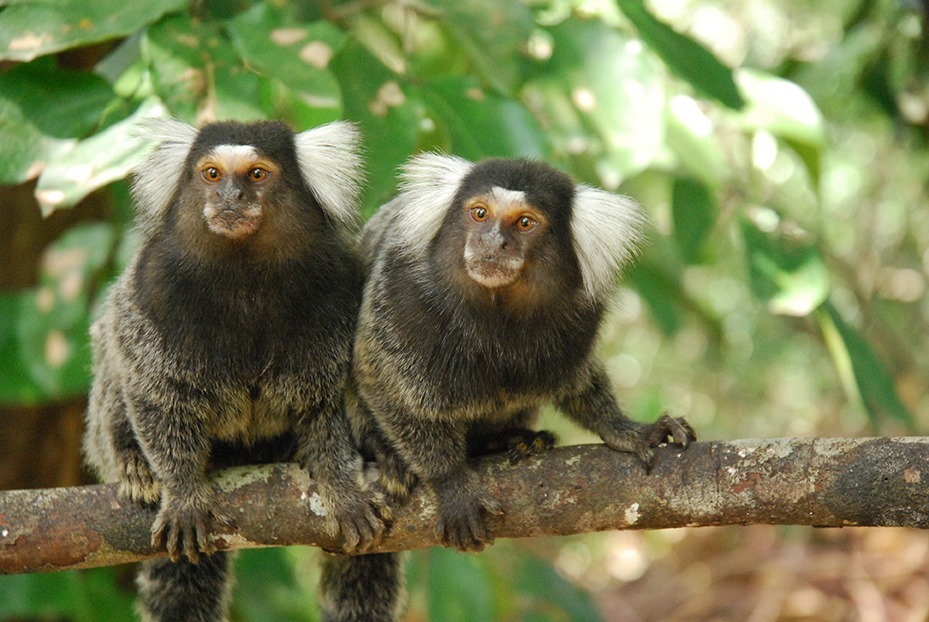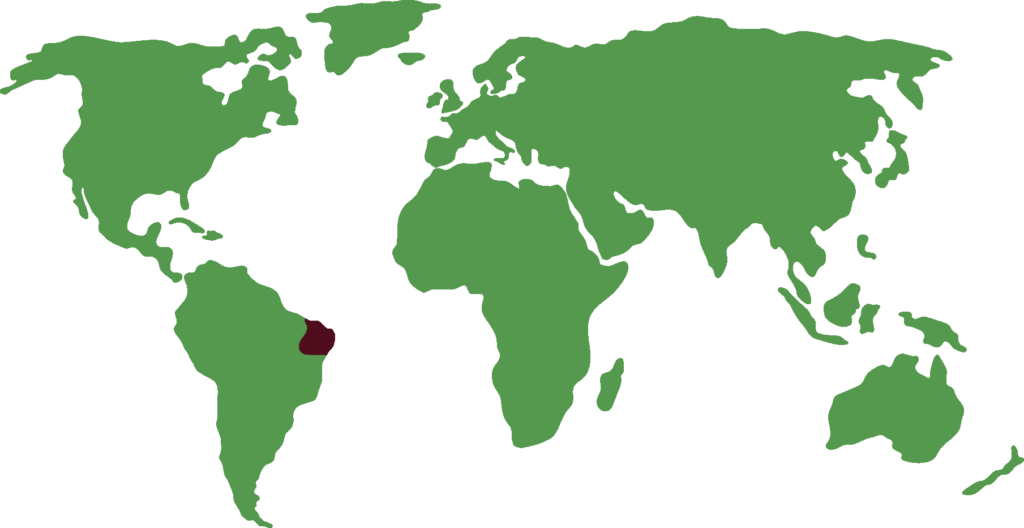COMMON MARMOSET
Callithrix jacchus

LENGTH

30 cm
WEIGHT

450 g
LIFESPAN

11 years
The Common marmoset is a mammal belonging to the primate platyrrhini species of the family Callitrichidae. They are known to be the world’s tiniest type of monkey, measuring less than 30 centimeters in length and weighing around 450 grams.
General characteristics
Physically, they are characterized by two large tufts of white hair on both sides of their heads, which also gives them the name of cotton-eared marmoset. Like humans, their “white hair” appears as they get older. Their body fur is grayish to blackish, with varying shades of mottling.
Feeding
They feed mainly on sap, nectar nad other small animals like frogs, rats and fishes.
Behaviour
Pairs are monogamous and live in hierarchical groups of 15 to 20 individuals. They are usually family groups consisting of a pair and offspring.
They are diurnal and arboreal animals. They love to jump and climb. They mark territory with their own body odor, although they may also share territory with black-brushed marmosets. Marmosets may leave their natal groups when they reach adulthood.
They are very expressive. They use a range of vocal and visual communications to express and indicate different emotions and situations.
Reproduction
The gestation period lasts approximately 142 to 150 days and the number of hatchlings varies between 1 and 3.
Threats
They are not in danger of extinction at the moment, but their natural habitat is being degraded by human encroachment and they have adapted to live in humanized environments such as plantations.
Distribution
he Common marmoset can be found in the northwest coast of Brazil, mainly in dry areas of forests.

Did you know?
Unlike other primates that have flat nails, the common marmoset has claw-like nails and uses them to move along branches like squirrels, to extract sap from trees, etc.
It is a very team-spirited animal. When they find their favorite food, they emit a very particular sound to warn the rest of the group.
They usually have non-identical twin offspring, which is unusual for primates.
Conservation status
